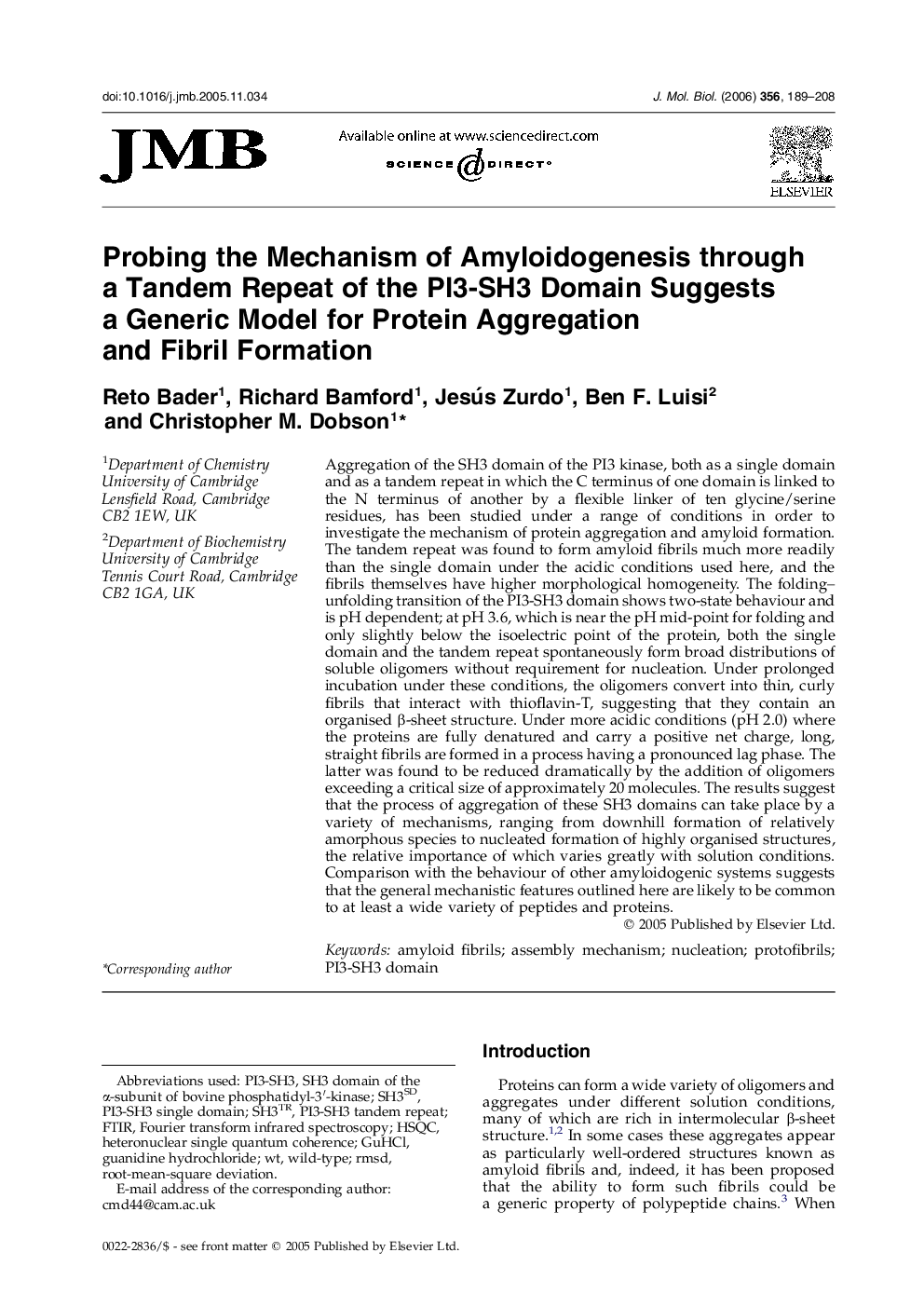| کد مقاله | کد نشریه | سال انتشار | مقاله انگلیسی | نسخه تمام متن |
|---|---|---|---|---|
| 2189923 | 1096227 | 2006 | 20 صفحه PDF | دانلود رایگان |

Aggregation of the SH3 domain of the PI3 kinase, both as a single domain and as a tandem repeat in which the C terminus of one domain is linked to the N terminus of another by a flexible linker of ten glycine/serine residues, has been studied under a range of conditions in order to investigate the mechanism of protein aggregation and amyloid formation. The tandem repeat was found to form amyloid fibrils much more readily than the single domain under the acidic conditions used here, and the fibrils themselves have higher morphological homogeneity. The folding–unfolding transition of the PI3-SH3 domain shows two-state behaviour and is pH dependent; at pH 3.6, which is near the pH mid-point for folding and only slightly below the isoelectric point of the protein, both the single domain and the tandem repeat spontaneously form broad distributions of soluble oligomers without requirement for nucleation. Under prolonged incubation under these conditions, the oligomers convert into thin, curly fibrils that interact with thioflavin-T, suggesting that they contain an organised β-sheet structure. Under more acidic conditions (pH 2.0) where the proteins are fully denatured and carry a positive net charge, long, straight fibrils are formed in a process having a pronounced lag phase. The latter was found to be reduced dramatically by the addition of oligomers exceeding a critical size of approximately 20 molecules. The results suggest that the process of aggregation of these SH3 domains can take place by a variety of mechanisms, ranging from downhill formation of relatively amorphous species to nucleated formation of highly organised structures, the relative importance of which varies greatly with solution conditions. Comparison with the behaviour of other amyloidogenic systems suggests that the general mechanistic features outlined here are likely to be common to at least a wide variety of peptides and proteins.
Journal: Journal of Molecular Biology - Volume 356, Issue 1, 10 February 2006, Pages 189–208